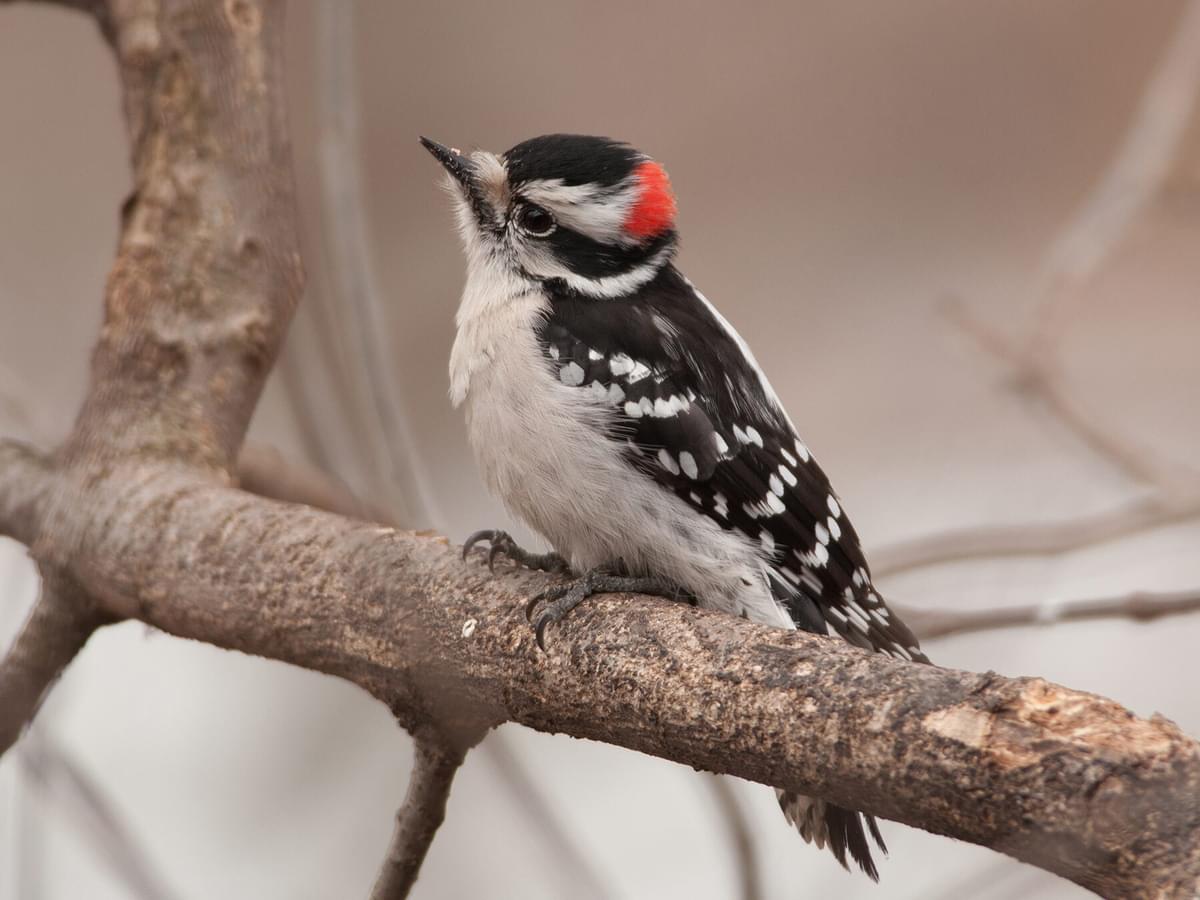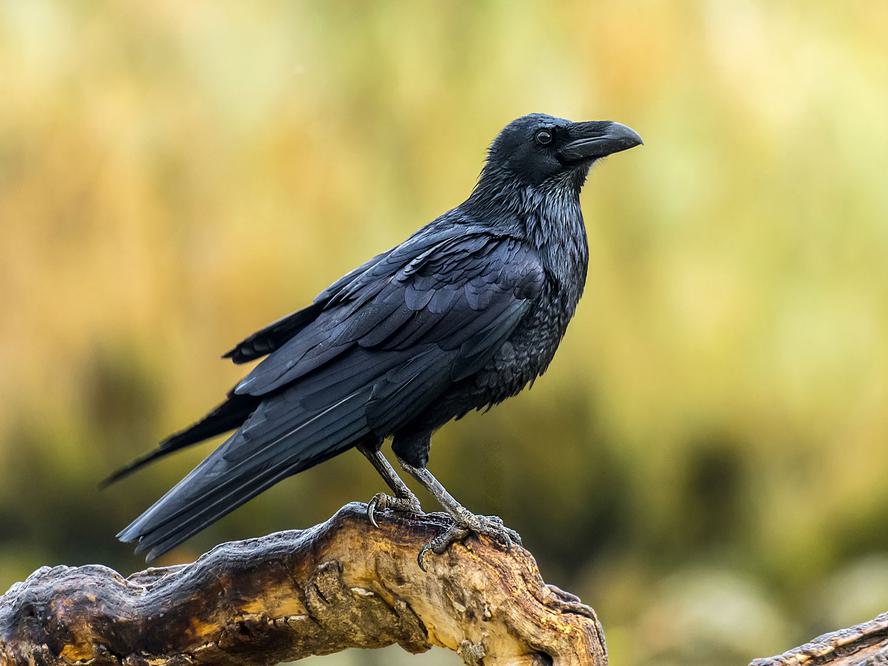Jump to Section
Downy vs Hairy Woodpecker: What Are The Differences?
Last updated: 11 August 2023

What’s red and black with black and white spots all over?! Both the Downy and Hairy woodpecker - two of the most easily confused birds in North America!
The Downy and Hairy woodpeckers both inhabit the Americas, including the USA, Canada and some parts of Central and South America. There are quite a few species of woodpeckers that look similar to both, including the Ladder-backed woodpecker, Nutall’s woodpecker and the Lesser-Spotted woodpecker. However, due to their close proximity to each other, Downy and Hairy woodpeckers are the most commonly confused, so what is the difference between them?
Size is a telling factor here, as the larger Hairy woodpecker is about 30% larger than the Downy woodpecker when fully grown, and they look more ‘full’ and less slender. Next, the long bill of the Hairy woodpecker compared to the Downy woodpecker might be a dead giveaway, though this is generally only the case for adult birds. Downy woodpeckers also have additional markings on their outer tail feathers.

Downy Woodpecker (Dryobates pubescens)

Hairy Woodpecker (Leuconotopicus villosus)
The crazy thing is, Downy and Hairy woodpeckers are not even part of the same genus - they are not all that related despite their incredible similarities. Hairy woodpeckers are closely related to White-headed and Red-cockaded woodpeckers, which look totally different, whereas Downy woodpeckers are more closely related to the similar Ladder-backed and Nutall’s woodpeckers.
Woodpecker identification has always been a headache for birdwatchers and ornithologists alike. Read on to discover all of the minute differences between Downy and Hairy woodpeckers!

Hairy Woodpecker perched on a log
Which is bigger, a Hairy or Downy woodpecker?
Hairy woodpeckers are considerably larger than the Downy woodpecker when fully grown - between 30% to 50% larger in most cases. Whilst this serves as an excellent means to compare these two woodpeckers when side-by-side, they are still difficult to identify when there’s no possible comparison.
Downy woodpecker measurements
- Downy woodpeckers measure 14 to 18cm (5.5 to 7.1 in) and have a wingspan of 25 to 31cm (9.8 to 12.2 in).
- Their body mass ranges from 20 to 33g (0.71 to 1.16 oz).
Hairy woodpecker measurements
- Hairy woodpeckers measure 18 to 26cm (7.1 to 10.2 in) in length and have a wingspan of 33 to 43 cm (13 to 17 in).
- Their body mass ranges from 40 to 95g (1.4 to 3.4 oz).
As we can see, the Hairy Woodpecker is longer, with their minimum-sized adults being as large as maximum-sized Downy woodpeckers (18cm). They’re also much heavier, often weighing double or even triple that of the more compact and slender Downy woodpecker.

Downy Woodpecker perched on the branch of a tree
Which is more common, Hairy woodpeckers or Downy woodpeckers?
Both the Downy and Hairy woodpeckers are distributed primarily across North America, including the USA and Canada.
The Hairy woodpecker extends further north into Alaska, British Columbia, and Quebec, and also further south into the Bahamas, Costa Rica, El Salvador, Nicaragua, Honduras, Mexico, Guatemala, Panama, and Saint Pierre and Miquelon. However, populations are in Central America become increasingly limited the further south you go.
The Downy woodpecker is mainly confined to North America and does not extend quite as far north as the Hairy woodpecker.
Whilst the Hairy woodpecker has a broader distribution, it’s less numerous than the Downy woodpecker, with a population of around 9 million (taken in 2003). The Downy woodpecker population was estimated at approximately 14 million between 2005 and 2015.
The Downy woodpecker is generally seen as much more abundant as they favor suburban areas and more regularly visit back gardens in search of food and water.

Hairy Woodpecker feeding from a backyard feeder
Other differences between a Hairy and Downy woodpecker
Whilst size is the primary differentiator between Hairy and Downy woodpeckers, there are several other ways to identify them:
Bill size
As touched upon earlier, the Downy woodpecker’s bill is considerably shorter and more compact than the Hairy woodpecker’s bill. The Hairy woodpecker’s bill is around as long as its head, whilst the Downy woodpecker’s bill is around 1/3rd of the size of its head. This is a great way to identify either species when there are no available size comparisons.
Tails
The Downy woodpecker has black patterns, albeit usually subtle, on their outer tail feathers (retrice feathers). They can occasionally be quite pronounced. Contrastingly, the Hairy woodpecker rarely has markings on its outer tail feathers, and when it does, they can be tough to spot. This is a popular way to identify the Downy woodpecker - it will nearly always have some form of markings on its outer tail feathers.

Downy Woodpecker on a suet bird feeder
Call/vocalizations
In addition to being a smaller, more diminutive woodpecker in terms of size, the Downy woodpecker is also quieter and has a softer call. The Downy woodpecker’s call is a soft and whiny high-pitched chirp that some describe as friendly. The Hairy woodpecker’s call is louder, sharper and more transient.
Additionally, Hairy woodpeckers have a faster drumming beat when they’re pecking at trees. Downy beats are roughly 17 drums per second, whereas Hairy beats are around 25 per second. This drumming sound is not just used to excavate nests and insects from trees but also serve a purpose in their complex mating rituals and territorial displays.
Markings on the head
Both woodpeckers have a ring around the back of the head, and for males, this will be somewhat covered by red patches. For both males and females, this ring meets in the middle in the case of the Downy woodpecker, but does not in the case of a Hairy woodpecker.
Another differentiating marking is the ‘spur’ marking that is present on the Hairy woodpecker’s neck, but not on the Downy woodpecker’s neck. This black feathery spur extends downwards from underneath the neck.
Downys also often have fluffier nasal tufts above the beak than Hairy woodpeckers.

Female Hairy Woodpecker, lacking the red on the top of the head

Female Downy Woodpeckers also lack the red patch on the head
Behavior and diet
Downy woodpeckers are more likely to live in and visit suburban areas and generally live in lighter brush and younger trees. Overall, you’re much more likely to see Downy woodpeckers outside of the forest. Hairy woodpeckers are more secretive, and much prefer the calm of their deeper forested habitats. The shyer Hairy woodpecker much prefers deep, mature woodland with a selection of large trees to choose for building nests and establishing territories.
Both woodpeckers have similar omnivorous diets, but Hairy woodpeckers may be slightly more inclined to hunt insects, mostly wood-boring beetles, flies and larvae of various kinds. They’re also both monogamous and make their nests in similar locations within the stumps of trees, though Downy woodpeckers are more flexible.
Downy woodpeckers are sometimes deemed to be some of the friendliest birds in North America and are often seen feeding peacefully alongside each other and other birds. You’re much more likely to attract a Downy to your garden, but that’s not to say that Hairy woodpeckers don’t frequent birdfeeders and suet balls too. If you’re lucky, you might seem both feeding at the same time as both woodpeckers are usually well-natured and benign towards each other.

Downy Woodpecker foraging for food in the forest
Regional differences
Both the Downy and Hairy woodpeckers have a variety of subspecies. Hairy woodpeckers tend to be larger the further north they are, likely to help them cope with the colder conditions.
Since Hairy woodpeckers have the larger range - as they extend all the way to South America - they probably also exhibit the greatest regional variation. Downy woodpeckers do differ throughout their range; however - those in the west USA and Canada tend to be darker.

Male Hairy Woodpecker eating an elderberry
Differences between Downy and Hairy woodpecker fledglings
It’s important to note that most of these differences apply mostly to adult birds with adult plumage. Fledglings or juveniles are a whole different ball game to identify because they have more varies plumage with a wider array of markings, different length bills, and some even have yellow spots on their head rather than red, which makes it difficult to determine whether they’re either Downy or Hairy woodpeckers at all!
Telling apart woodpecker fledglings is tough for even the most well-established birdwatcher. There will still be clues to unravel from the above differentiating traits, such as the different calls of the two birds and their tail markings.

Juvenile Downy Woodpecker

Juvenile Hairy Woodpecker
Why are Downy and Hairy woodpeckers so similar?
Downy and Hairy woodpeckers are remarkably similar despite not even being in the same genus (Downys are in the Dryobates genus, whereas Hairys are in the Leuconotopicus genus).
This is not uncommon in birds - corvids and juncos are examples of birds where, despite some species looking almost identical to one another, they are not all that related.
The similarities between Downy and Hairy woodpeckers are the result of convergent evolution. The same advantages to one species developing their traits and markings likely benefited the other species. Other theories suggest that Downy woodpeckers developed plumage to look alike to Hairy woodpeckers in order to trick them and other species, which helped them become more dominant.
Many woodpeckers look pretty similar to both Downy and Hairy woodpeckers, not just in the Americas but in other continents too. Again, this is probably the result of convergent evolution and the complex dissemination of woodpecker genes from their earliest ancestors.










